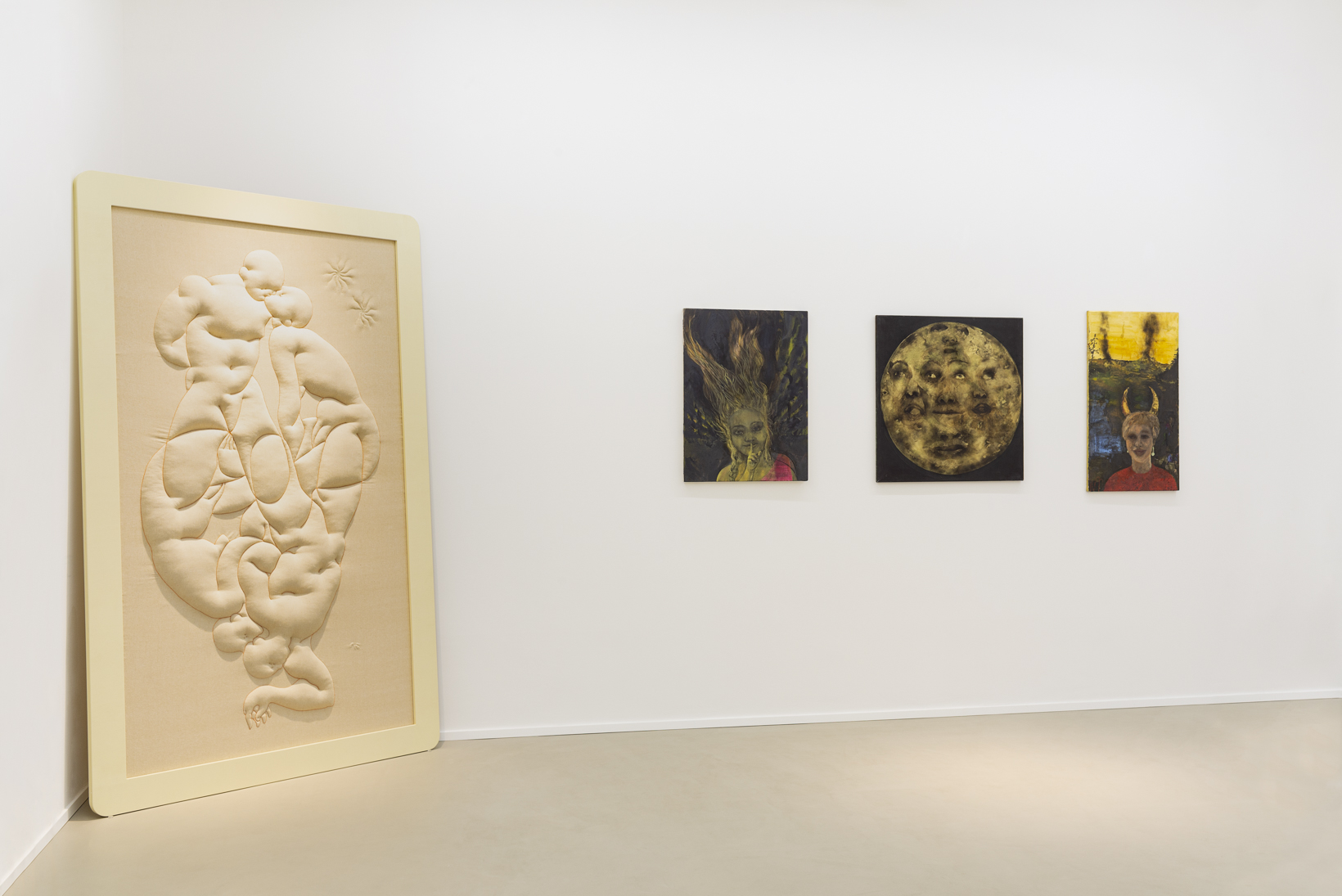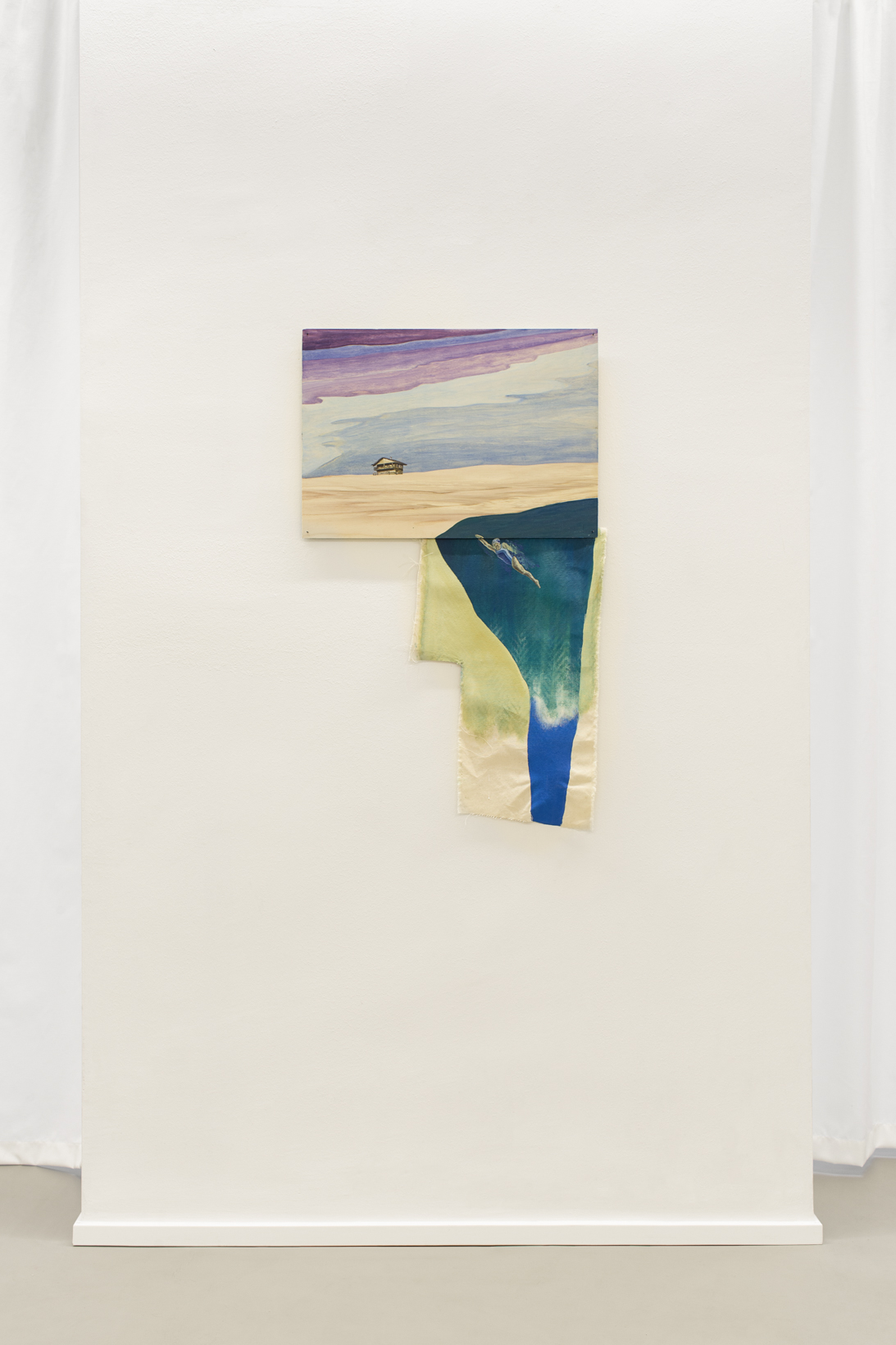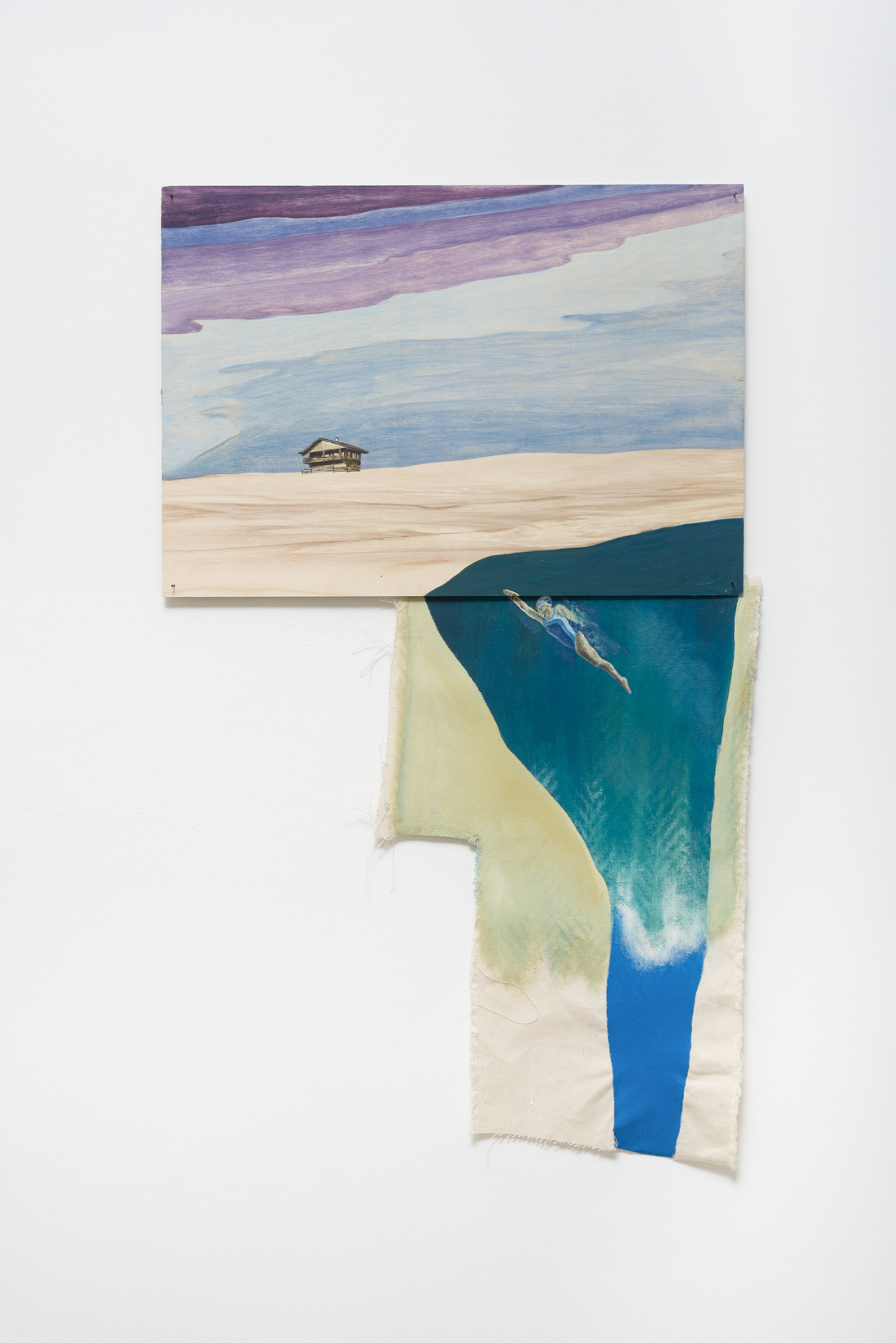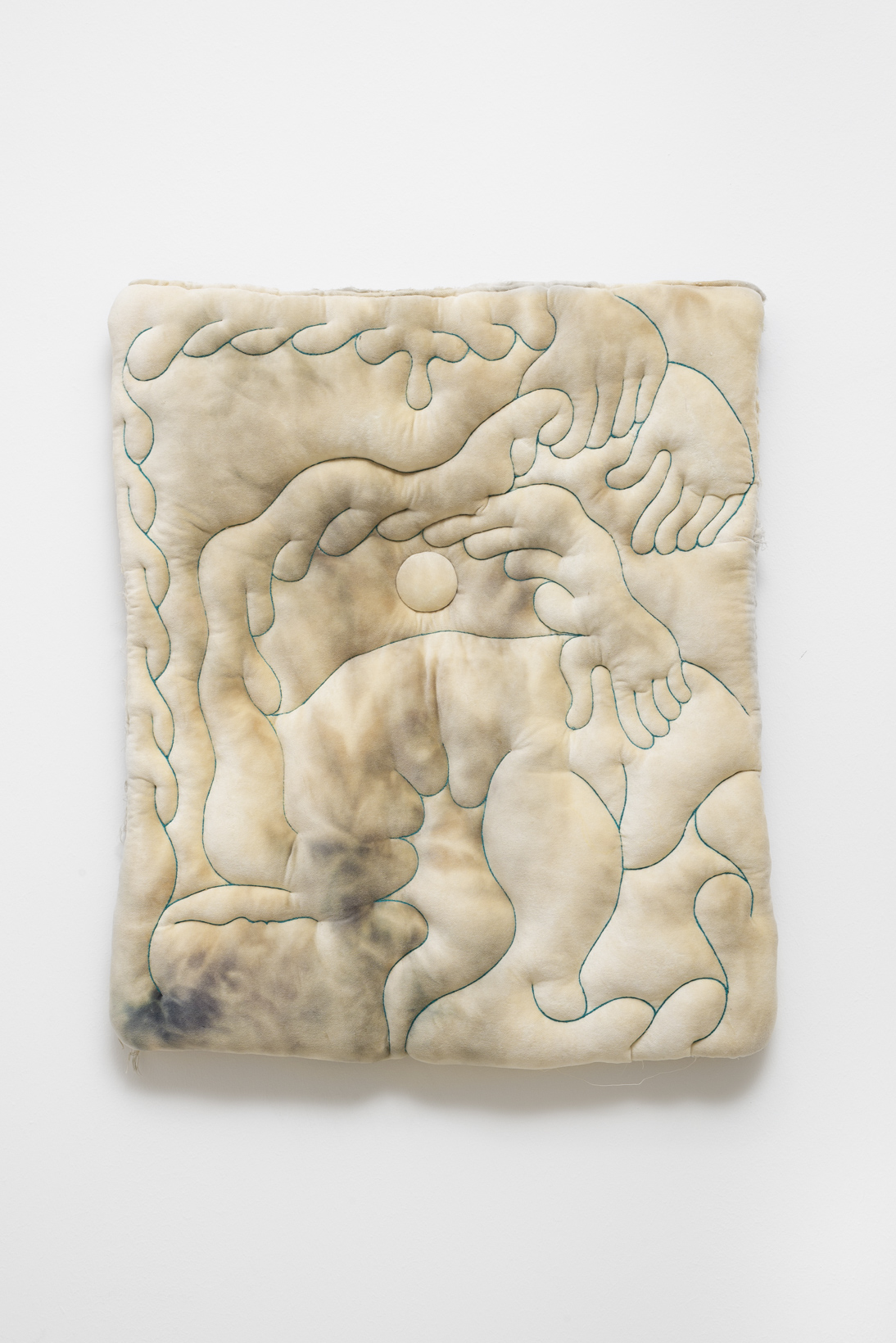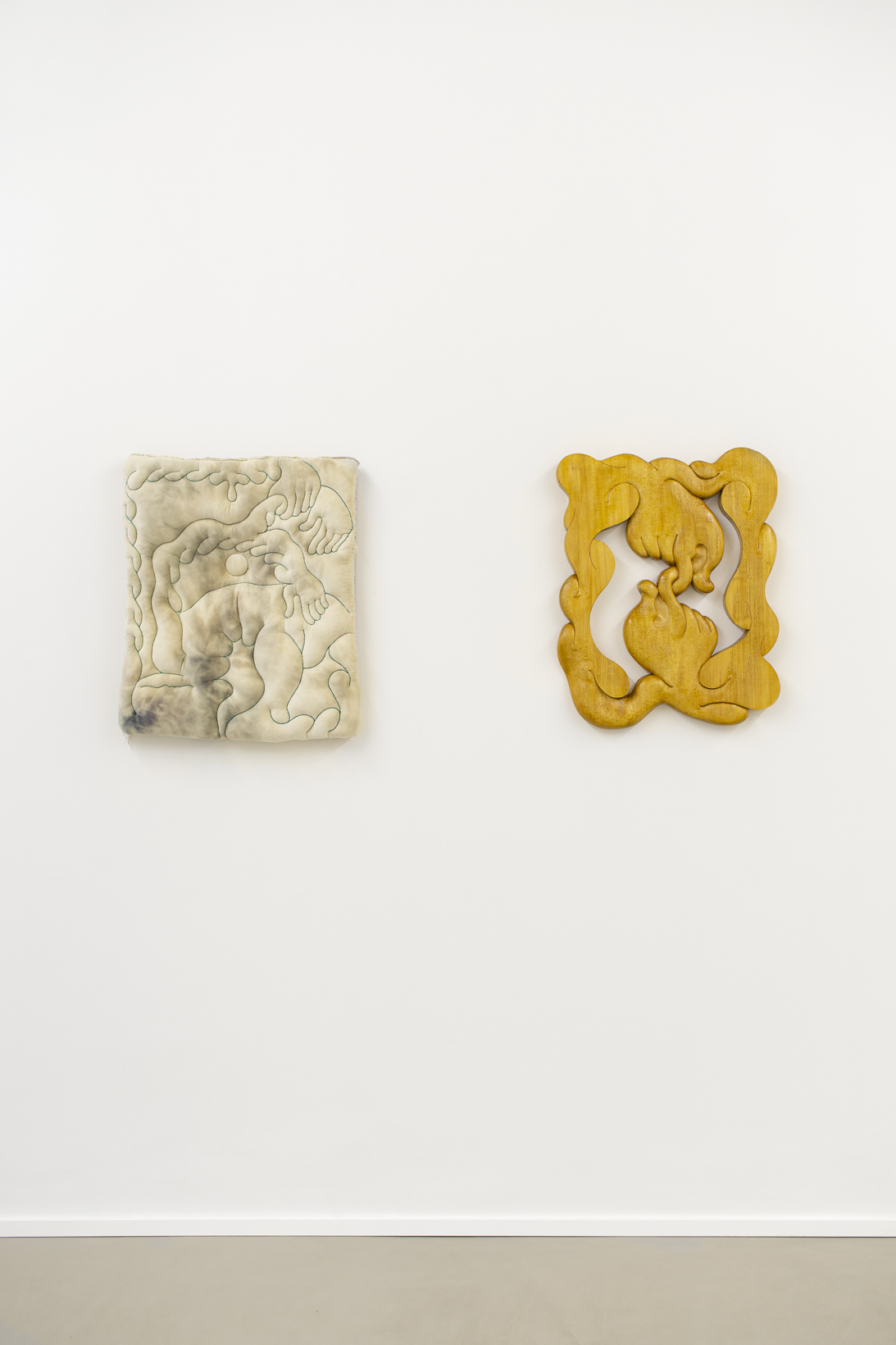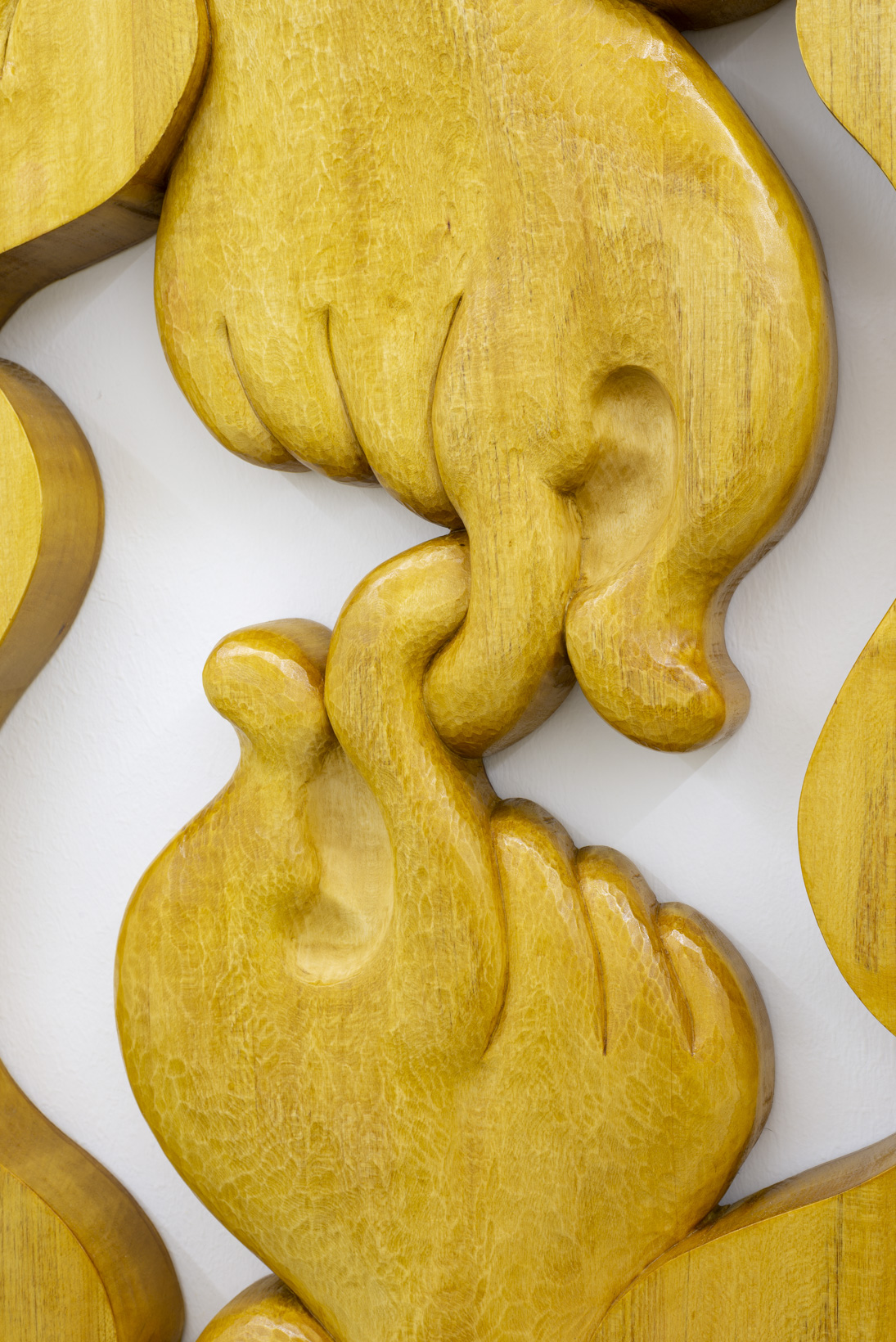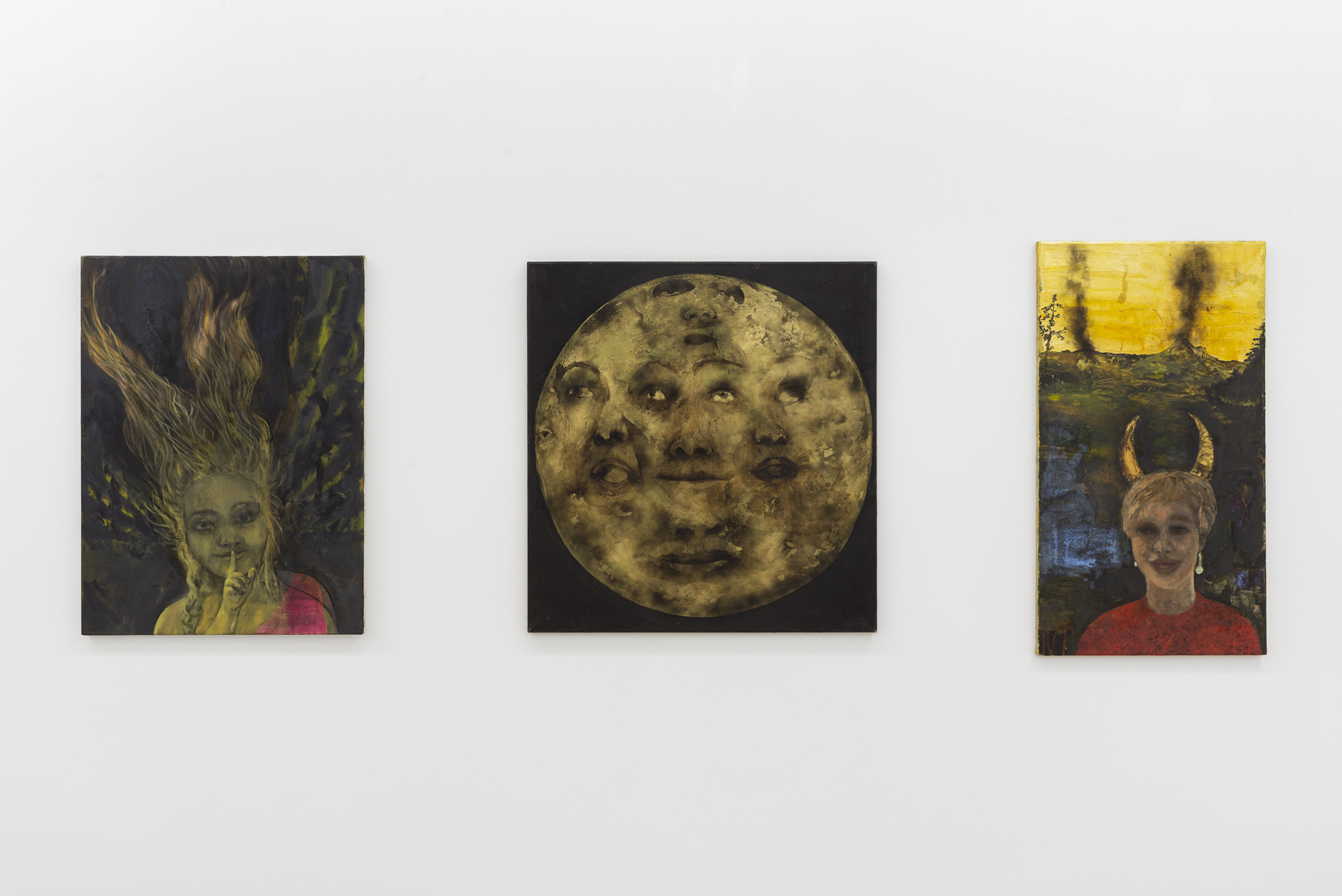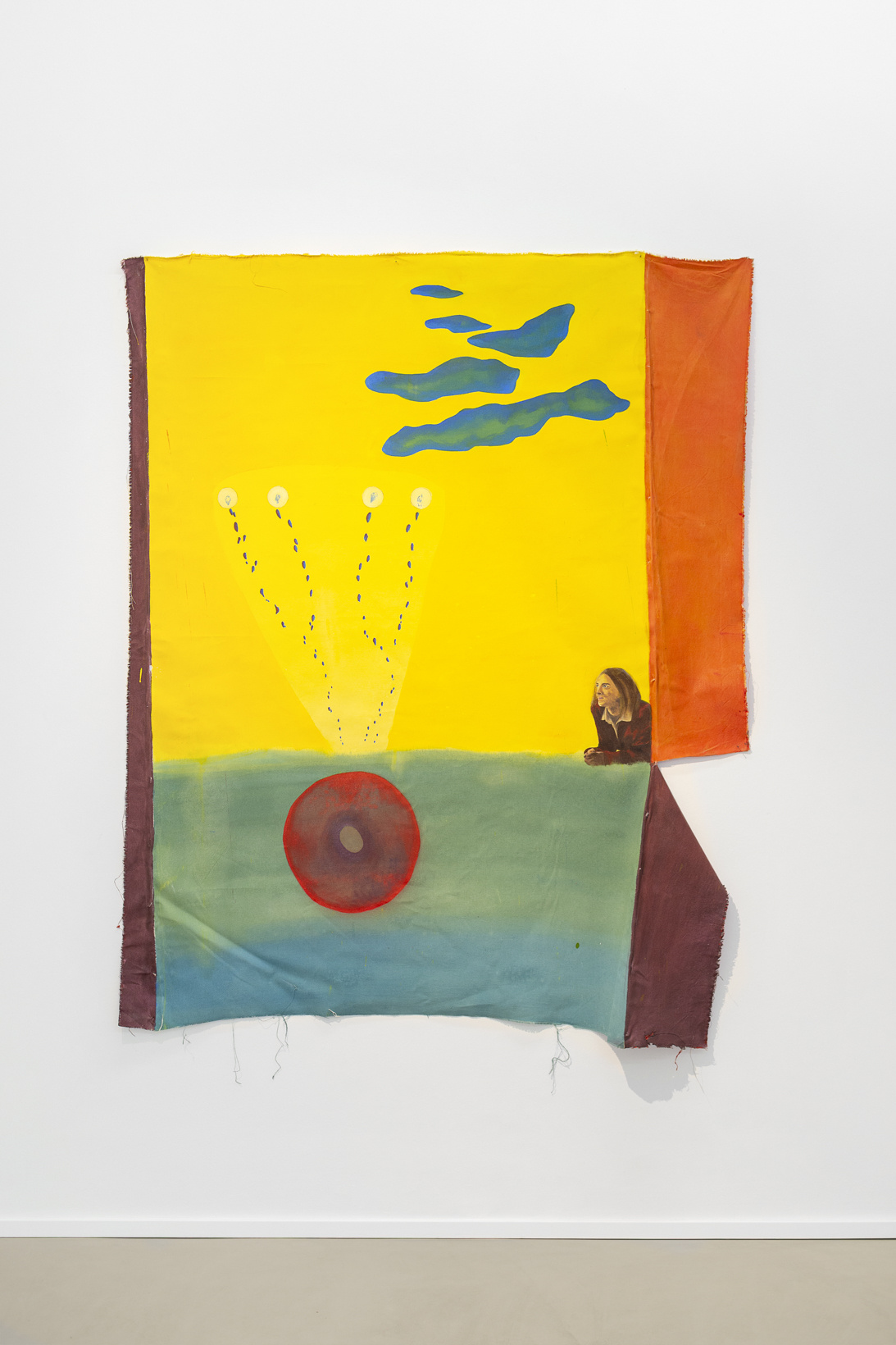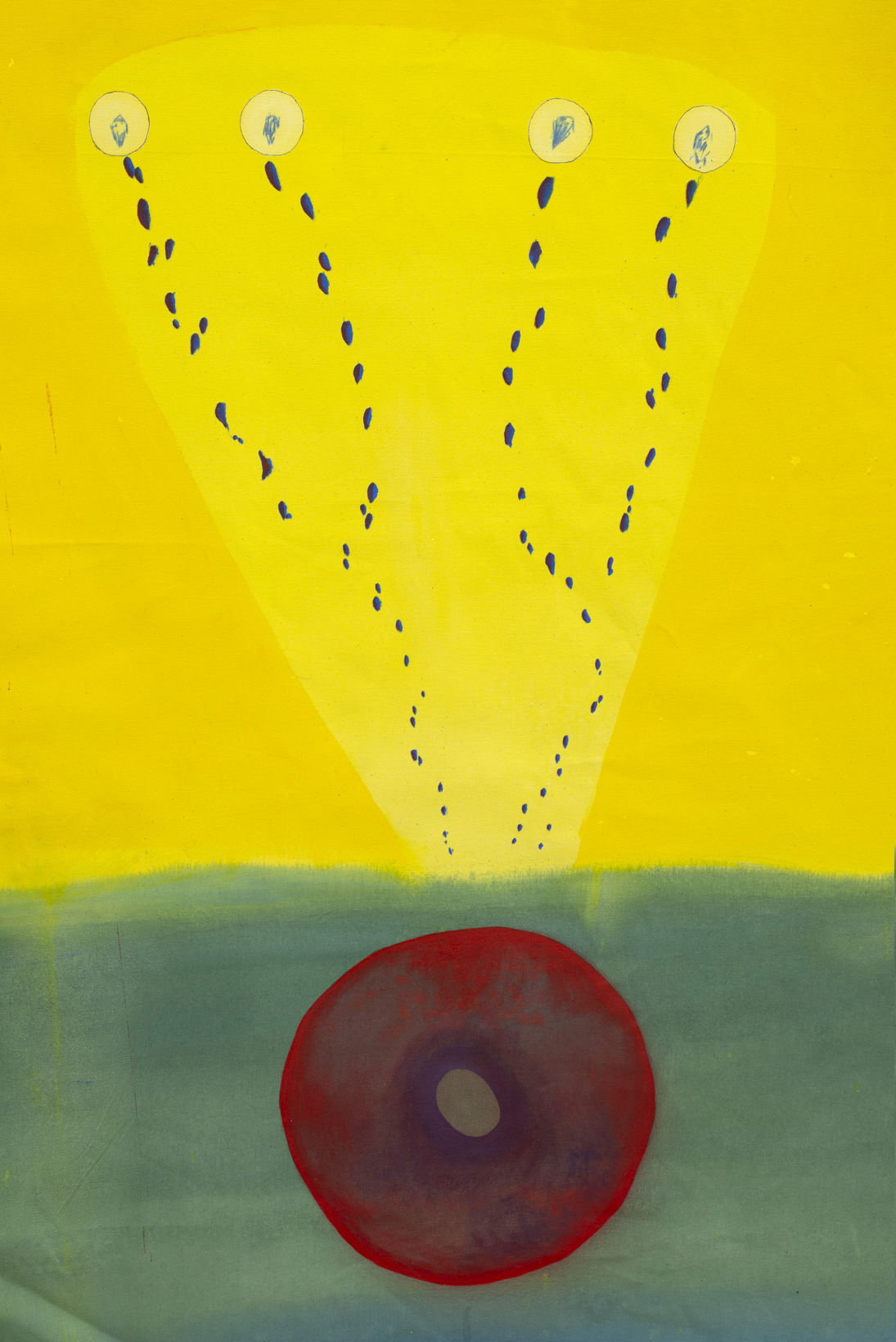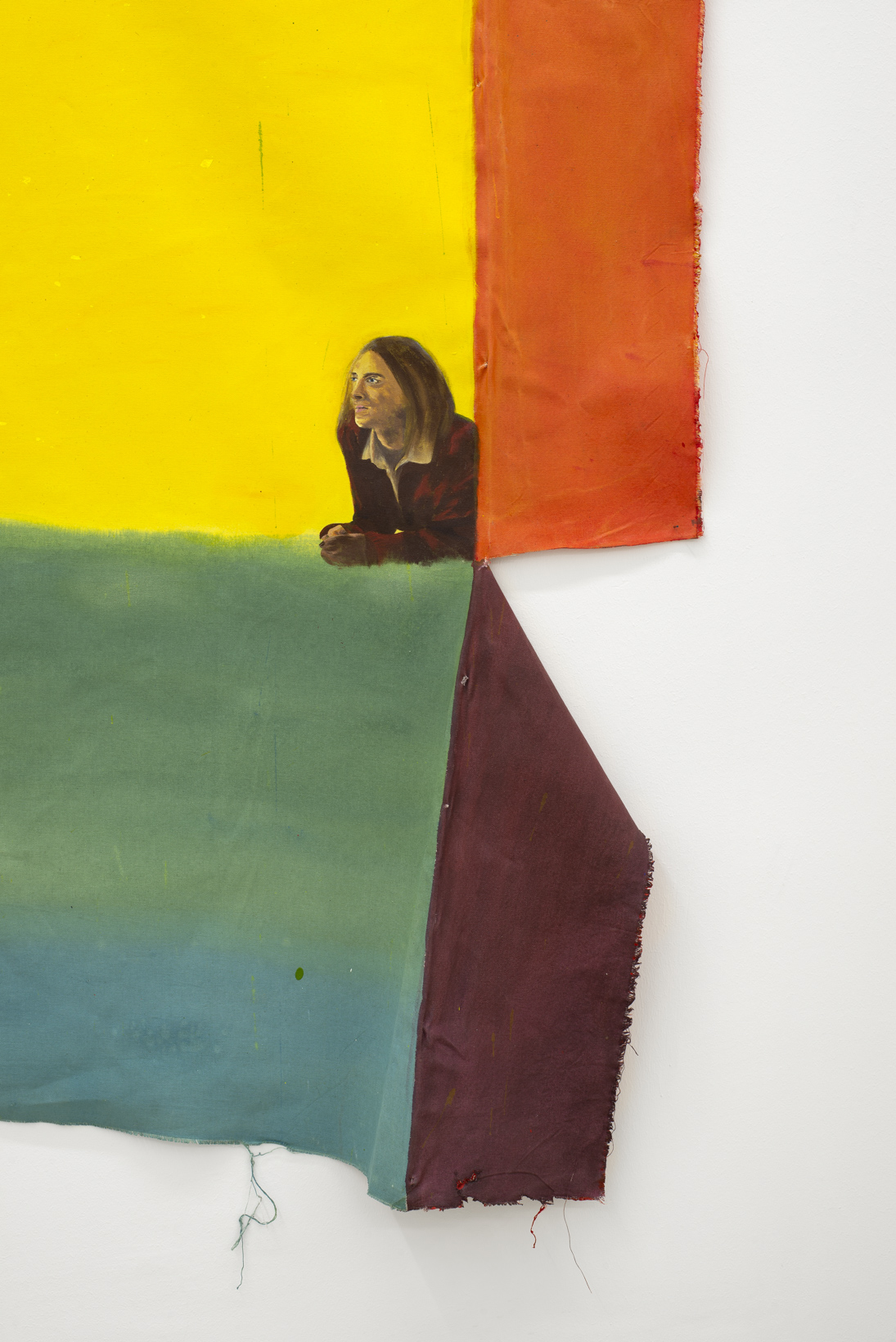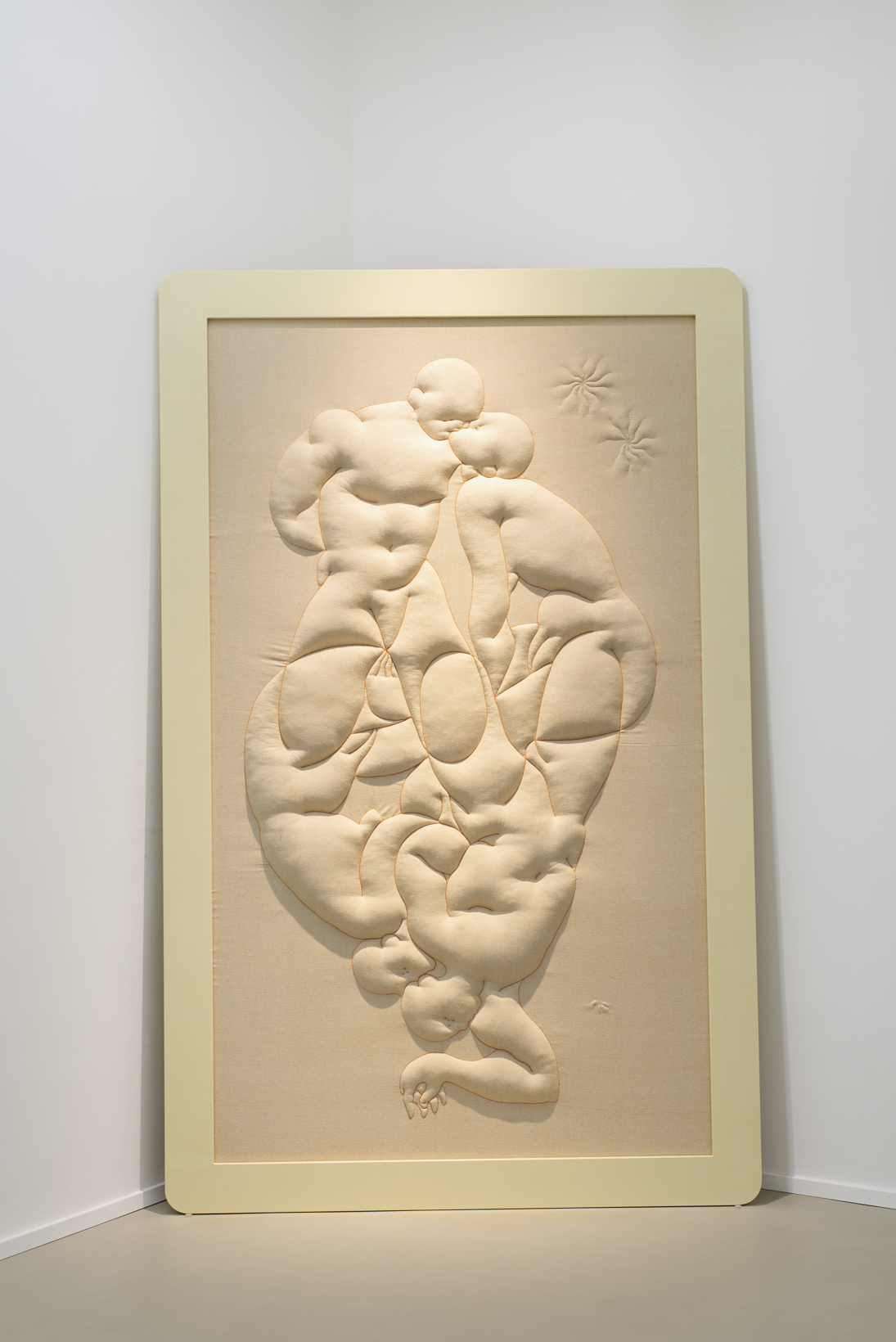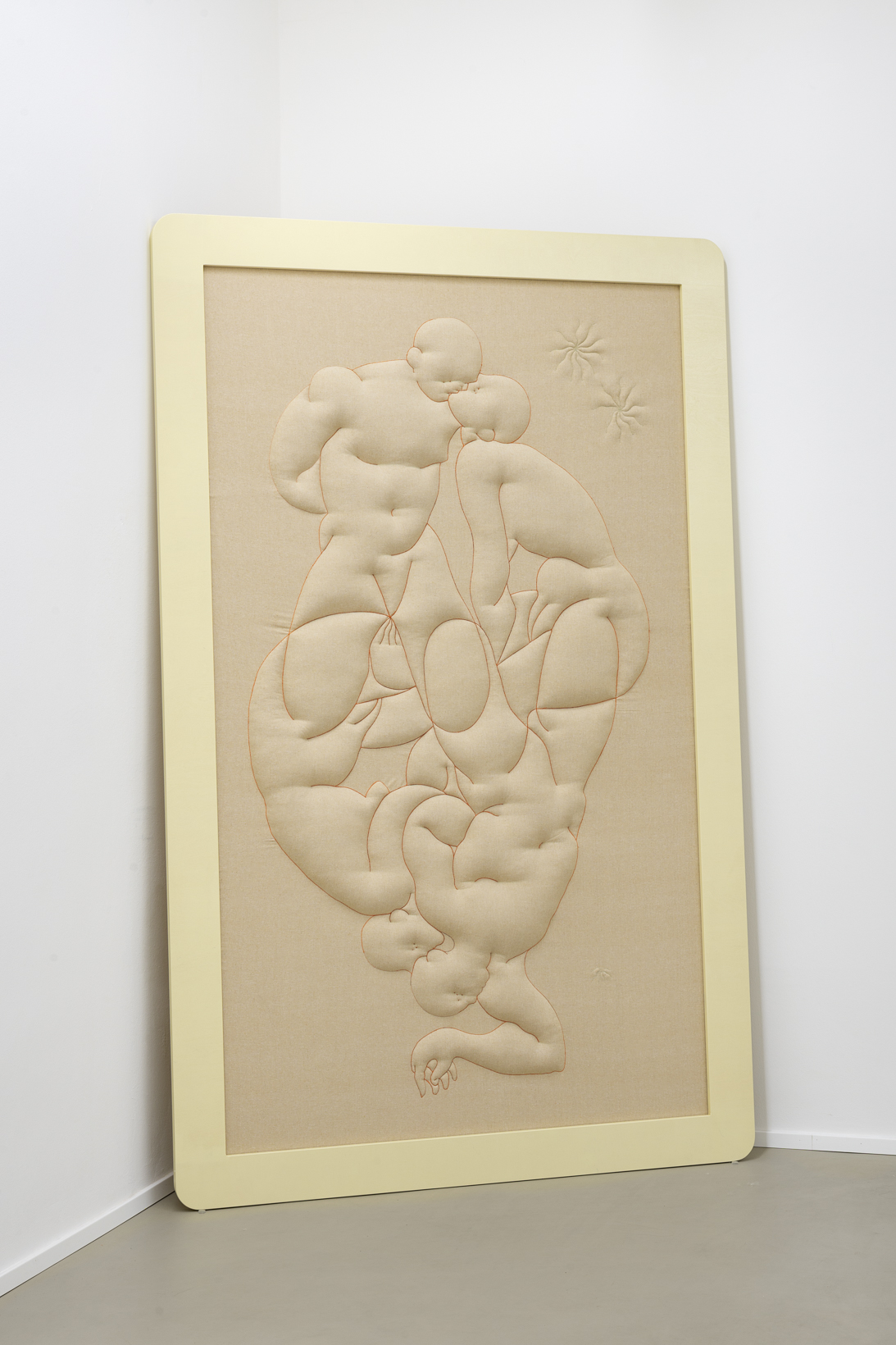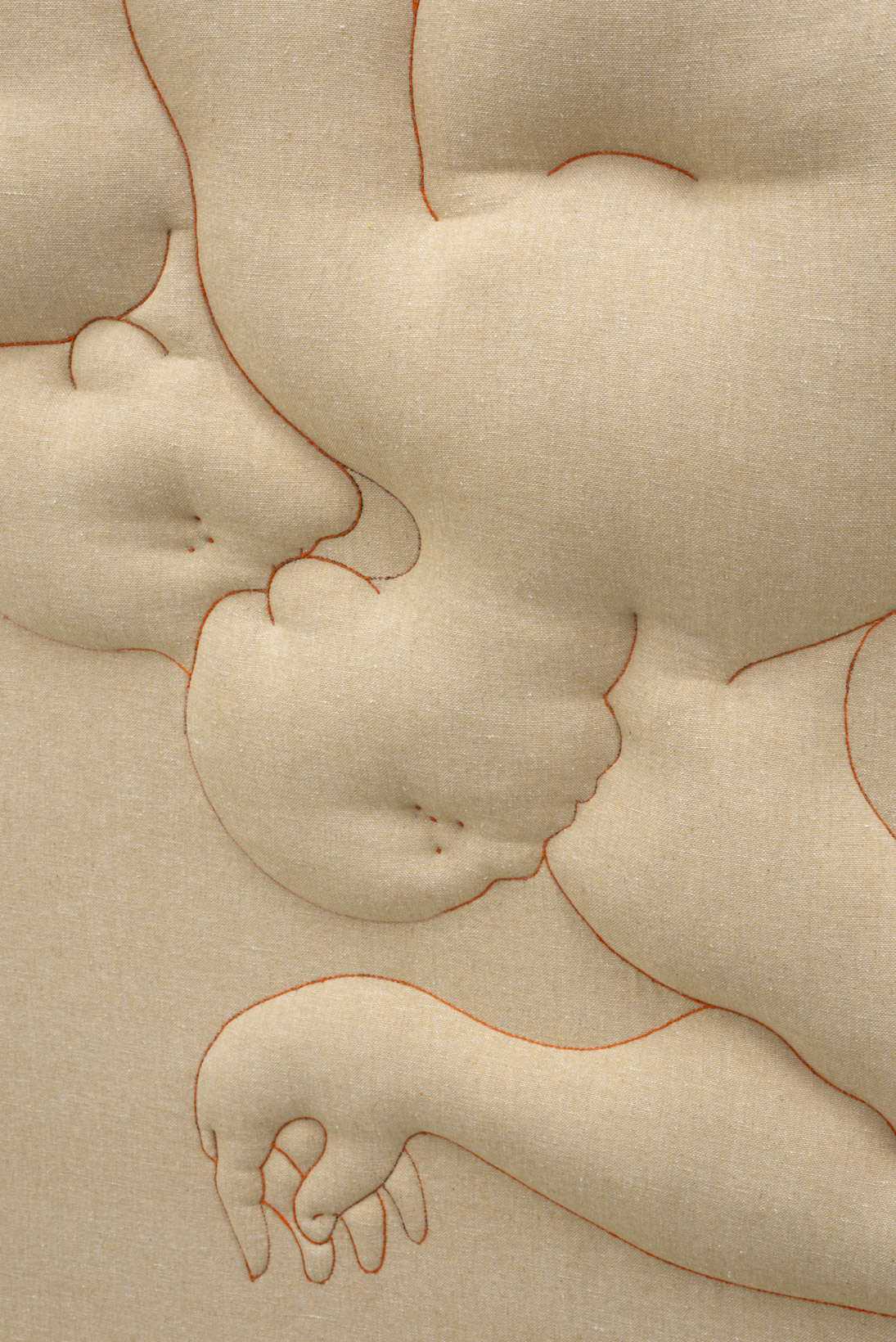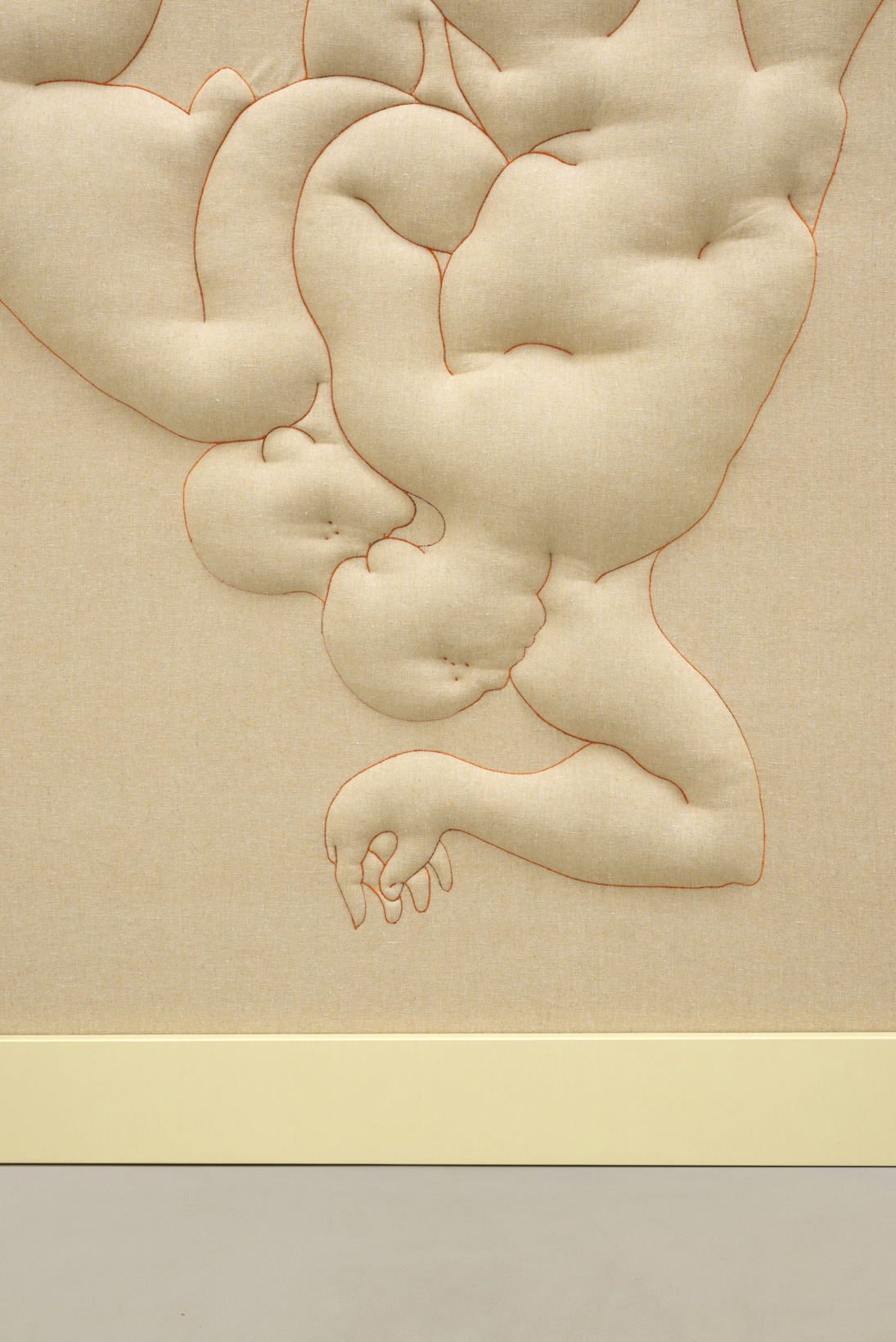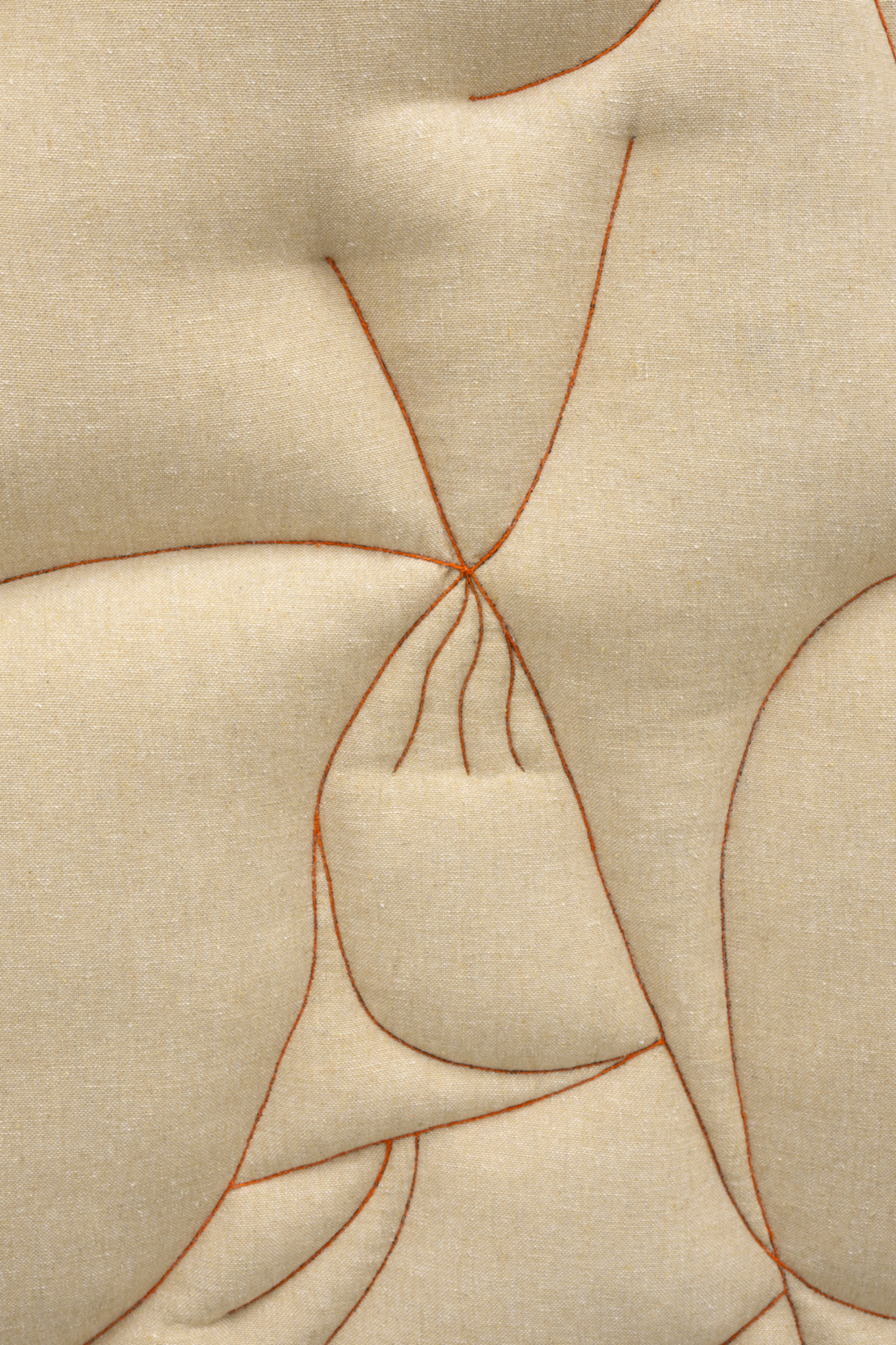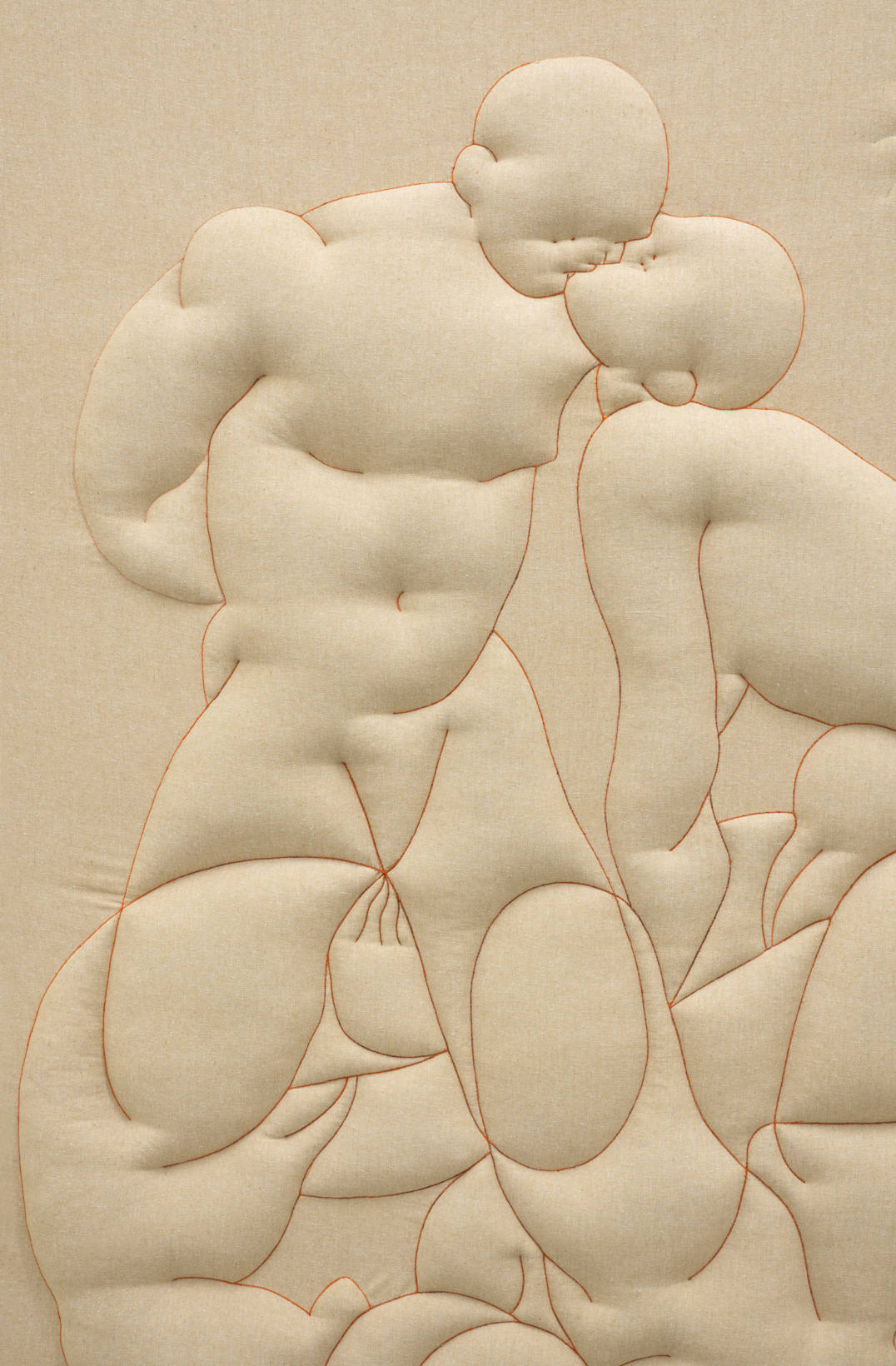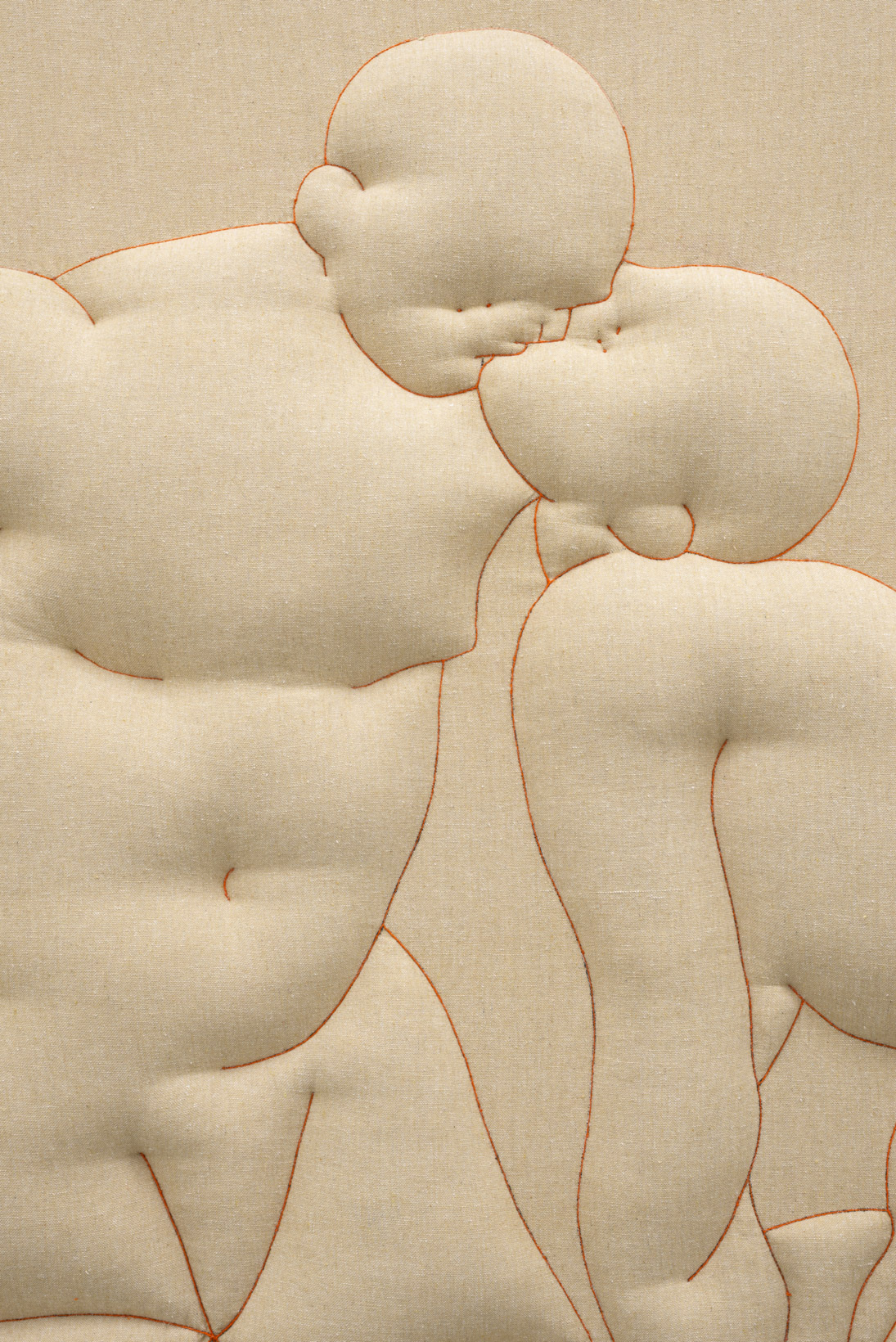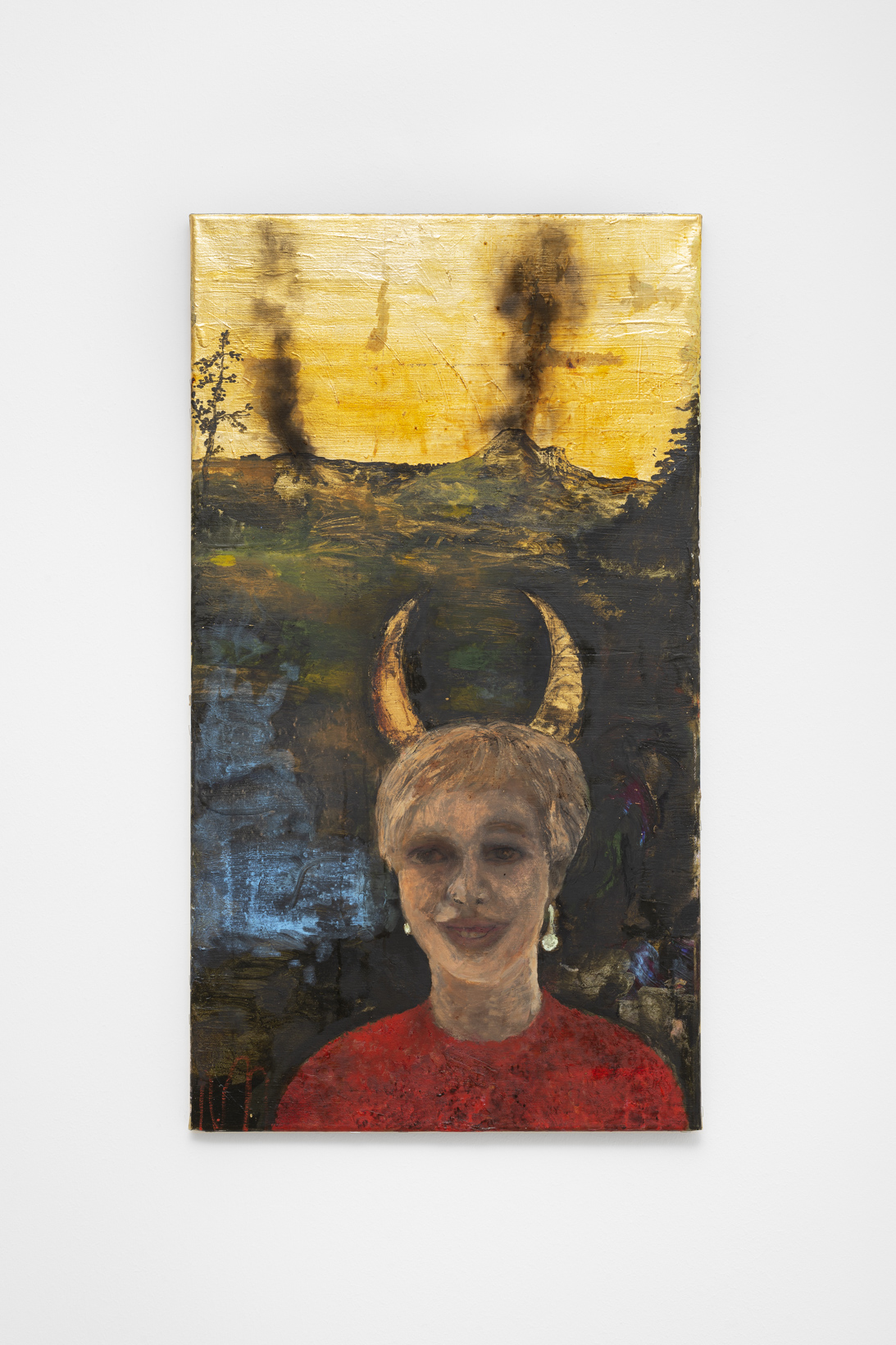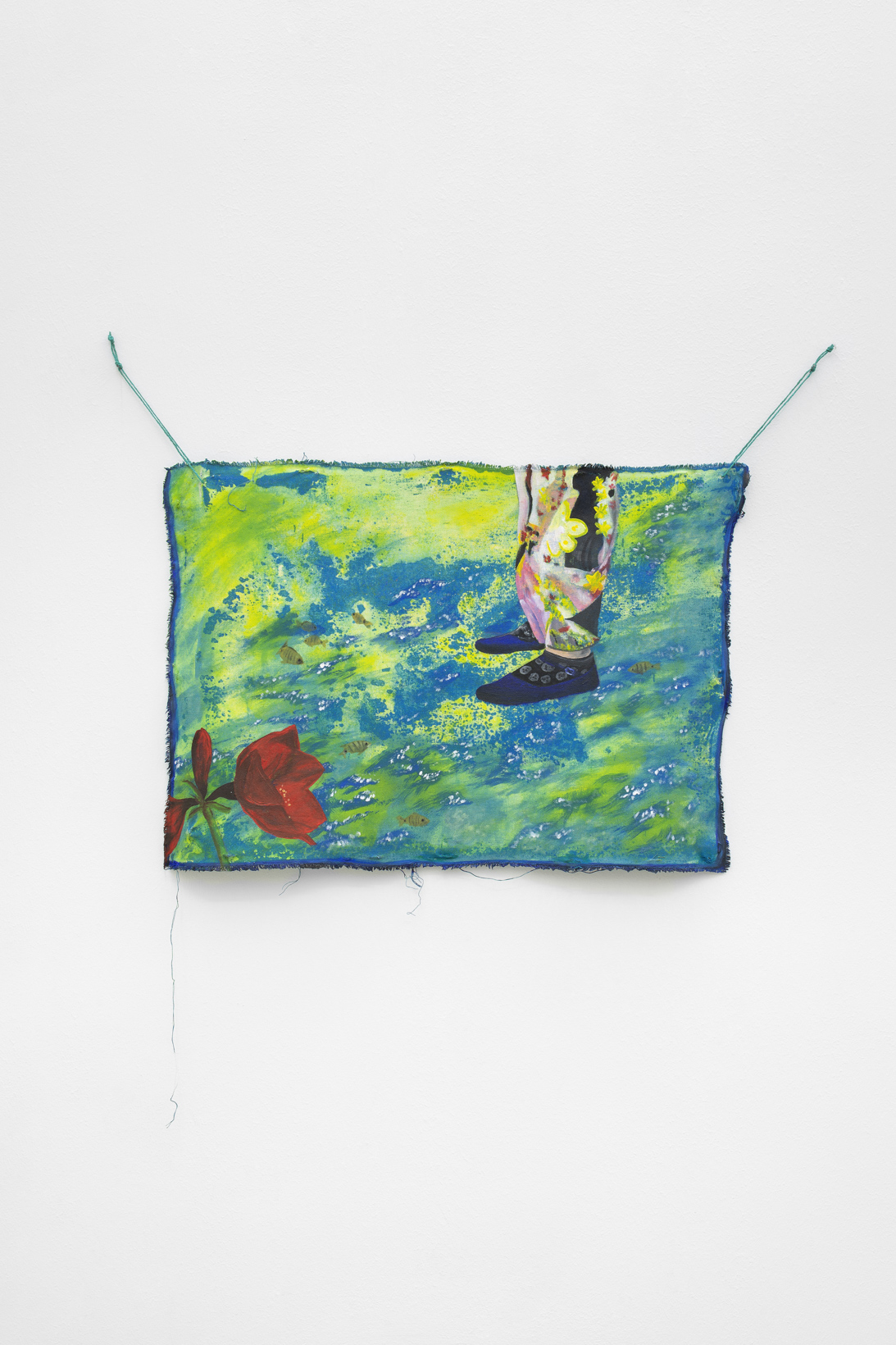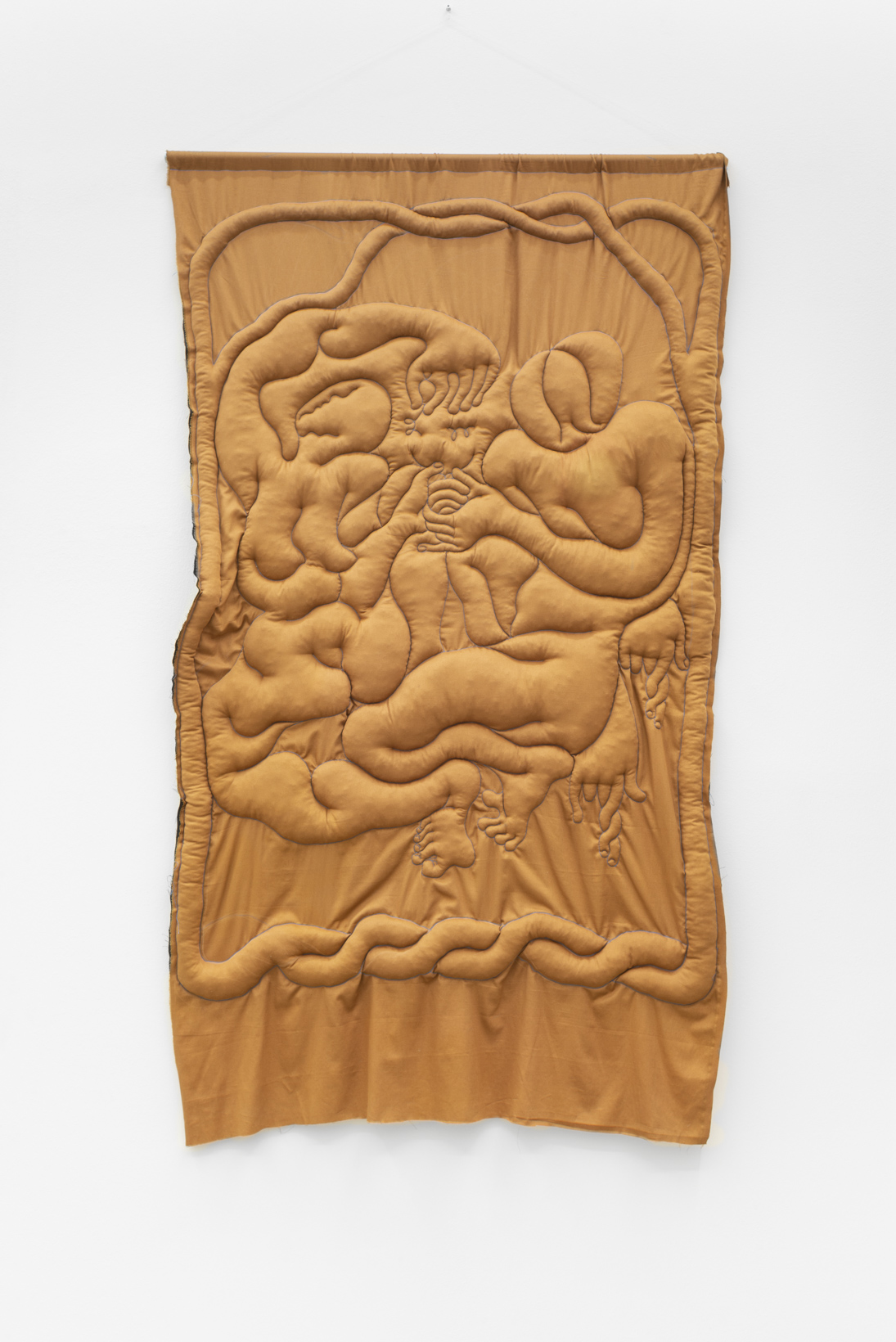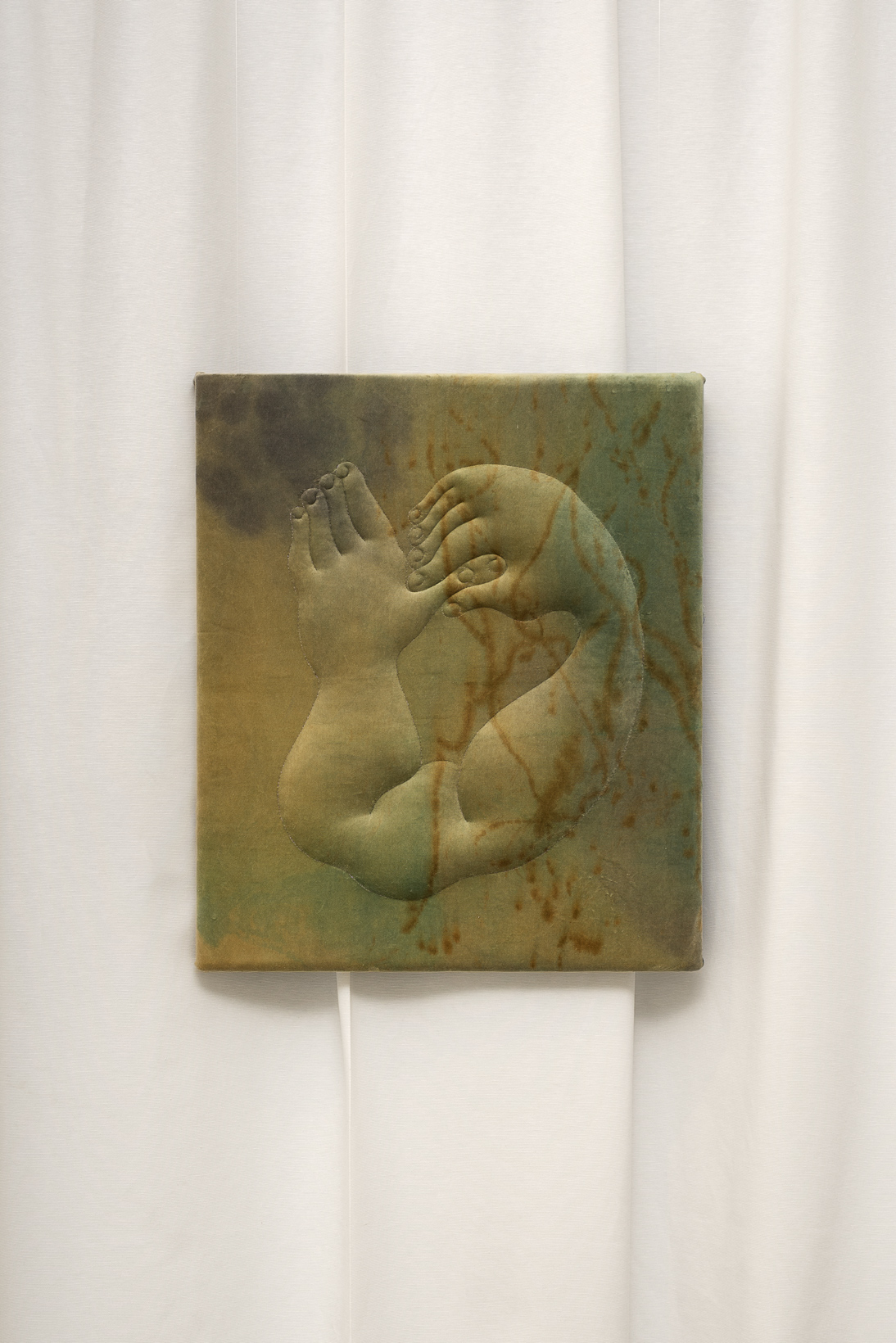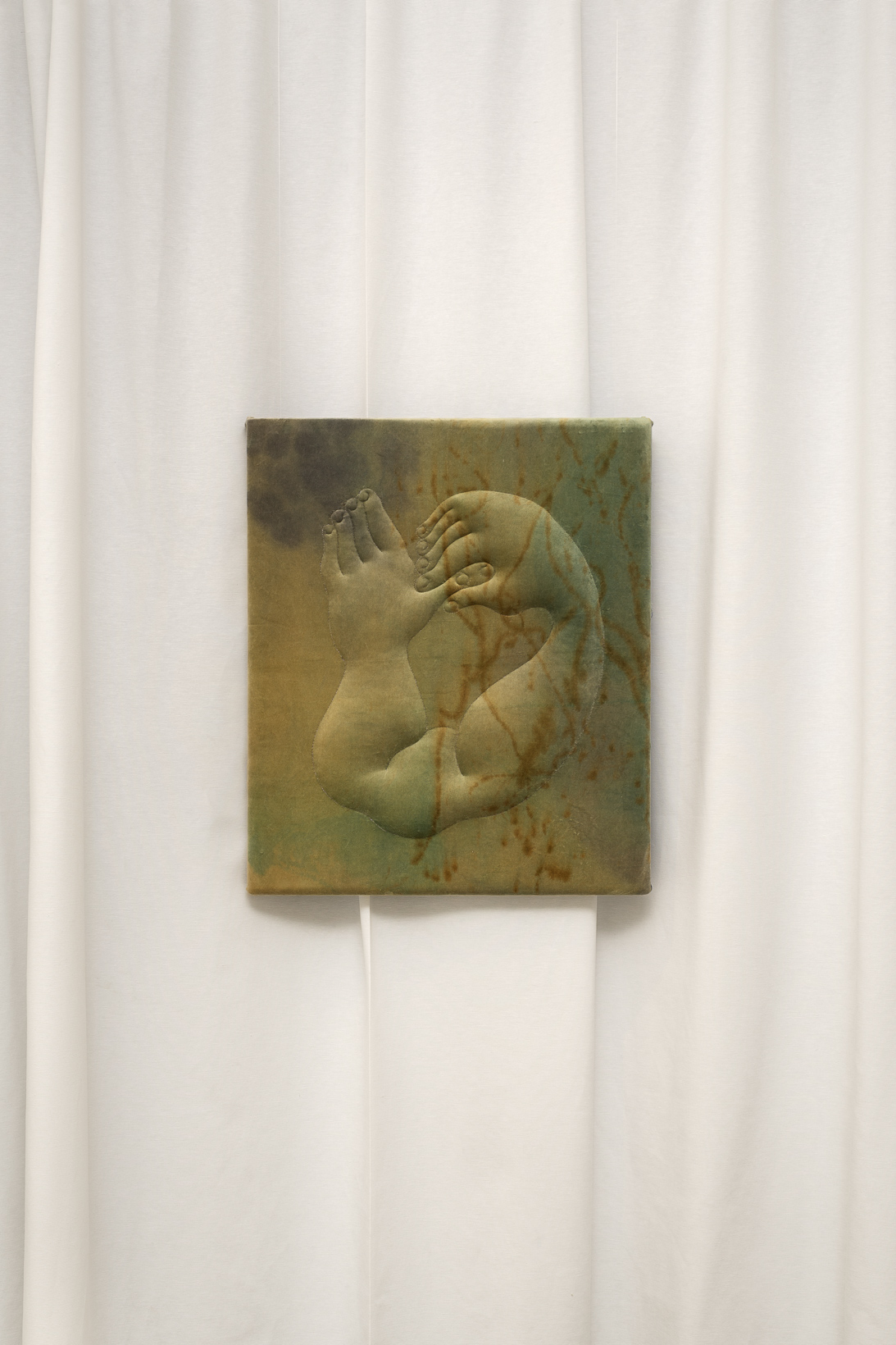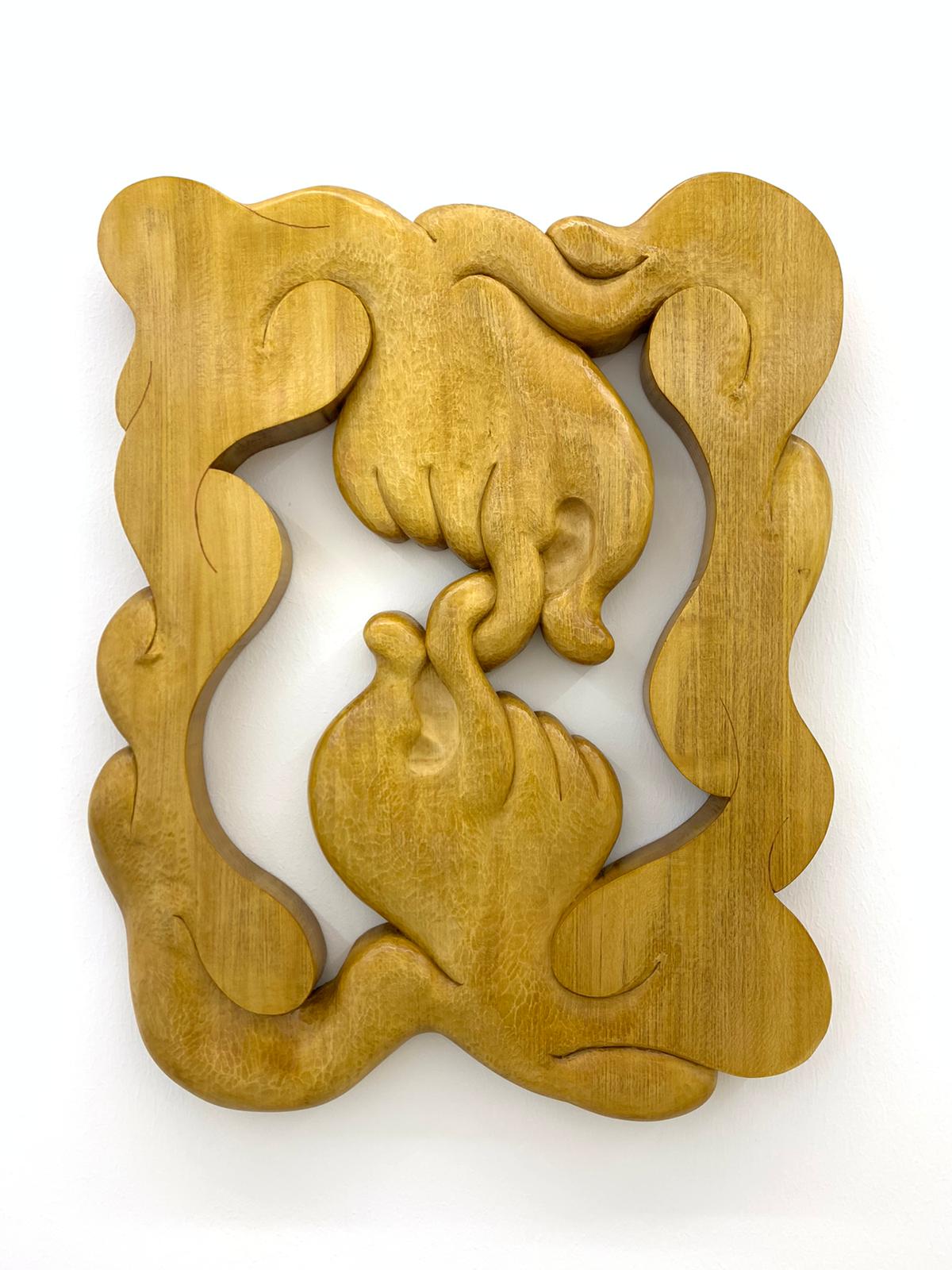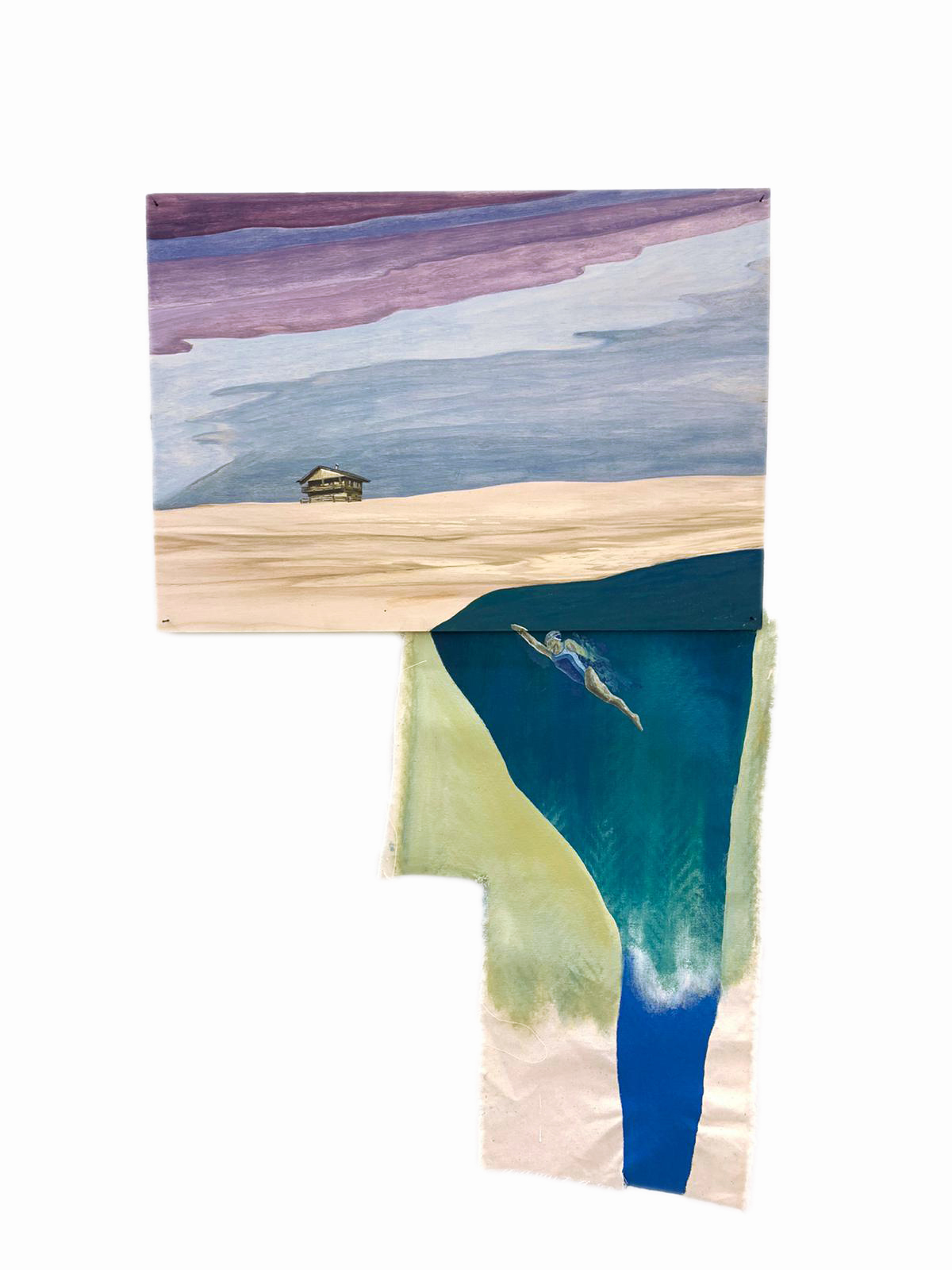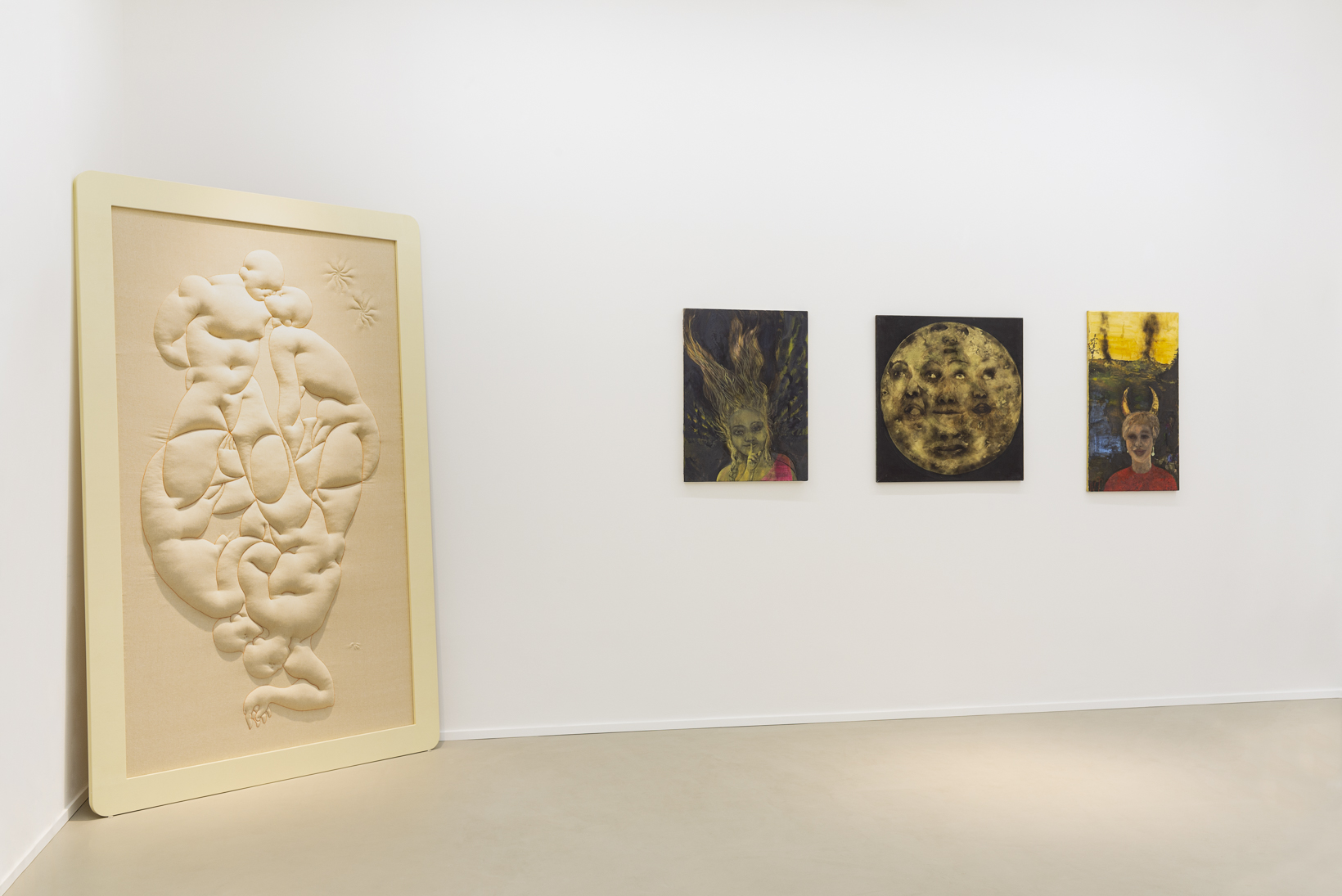Artists: Eliška Konečná, Stanislava Kovalčíková, Lotte Maiwald
Title: Feral Signals
Venue: eastcontemporary, Milan, Italy
Curators: Agnieszka Faferek and Julia Korzycka
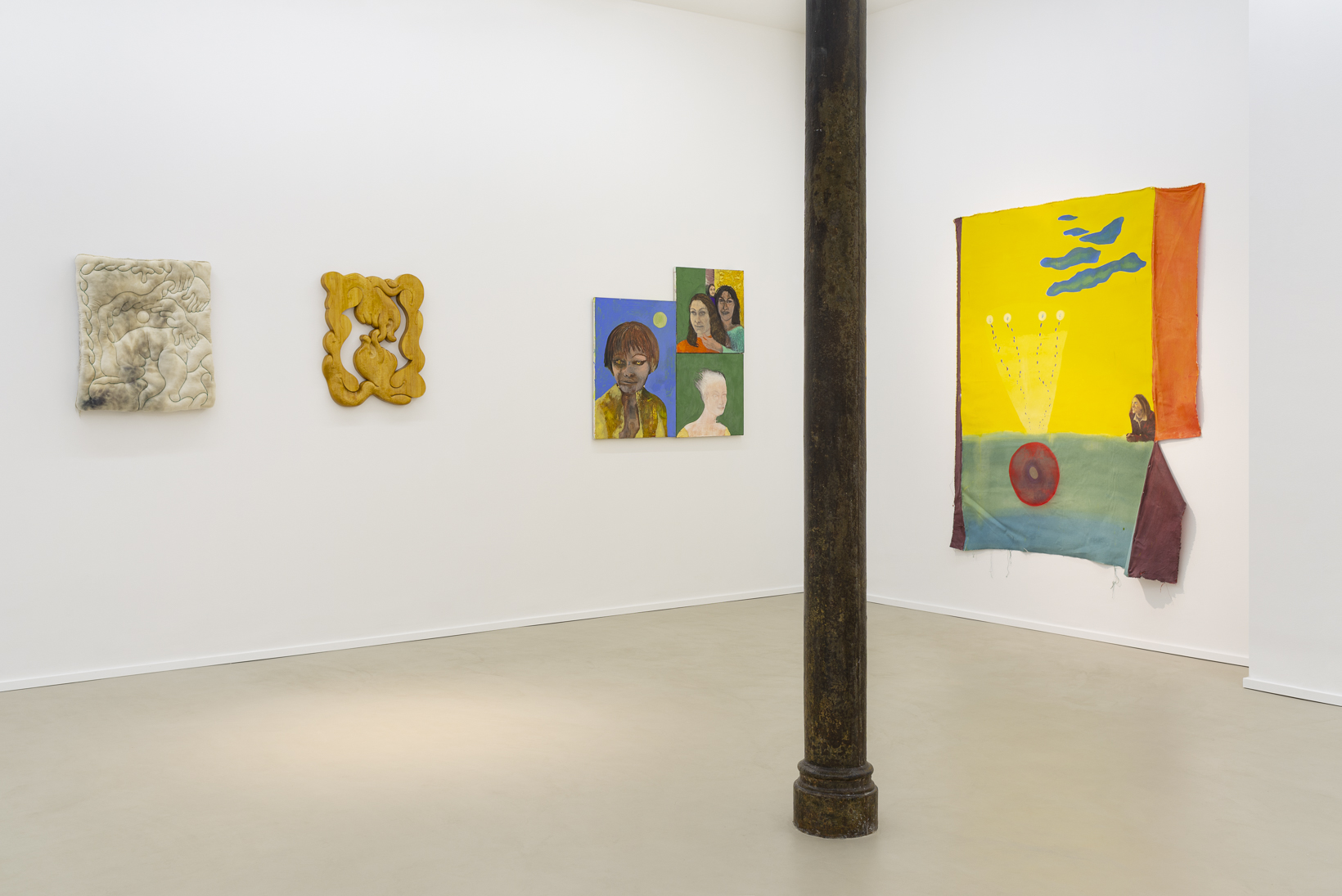
We are pleased to announce our group exhibition Feral Signals featuring a series of paintings and textile-based works by Eliška Konečná (Czech Republic, b. 1992), Stanislava Kovalčíková (Slovakia, b. 1988) and Lotte Maiwald (Germany, b. 1988). The ‘three sisters’, as we got used to call them adopting the title of the play by Anton Chekhov, each different, but all united by their interest in the exploration of the invisible and the subconscious.
The exhibition Feral Signals conveys the sensation of the somnambule oscillation between dream and reality, exploring in particular a category of ‘place’ in its archetypal and symbolic dimension. Where do we go when we fall asleep? A question we could pose, while immerging ourselves in the depths of the dreamlike, yet unsettling works by these three female artists. When we dream our mind becomes fluid allowing connections to form between sometimes remote concepts – the eponymous ‘feral signals’ – which we might not notice in the structure of waking thought. The works of Konečná, Kovalčíková and Maiwald seem to be as intimate and untamed as a night’s sleep during which their subconscious finds the protagonists of their future pictorial and textile compositions. All of them create a narrative context of a mysterious fairy tale that could be a mere whisper before falling asleep. Following the random juxtapositions typical for dreams, the artists create magical and enigmatic works, which disturb and fascinate us all at once, and while suggesting rather than defining the content, they encourage the viewer to open up to its inner self and personal associations.
Tender sensuality in Eliska Konečná’s modulation of shades and bas-reliefs evokes such game of associations and gives rise to a series of non-defined images. A series of textile-based works evoke ‘a sense of pleasure that derives from the visible dominance of curvy round shapes based on the gentle relationship between convexities and concavities.’[1] Balancing on the fleeting border of wakefulness and sleep, tactile and immaterial, the soft forms underline the transgression of the body and its visual narratives related to the corporeality perceived through the prism of desires and drives. The notion visible particularly in the work ‘It could be us’, which depicts intertwined bodies suspended in an abstract dimension. It seems to be a more subtle and fairytale like version of the soft sculptures by Surrealist Dorothea Tanning, which at the end of 1970s produced a series of textile works evoking fragile and soft bodily forms. Konečná uses found fabrics and stretches them against the edges of the frame, creating a bas-relief. The result does not come from the process of the shallow carving associated with the 15th-century sculptors but from fine and floaty work with textiles. The artist’s artifacts recall the internal experience of the human incursion to the metaphysical levels of physicality. Here, the body is not the opposite of the soul, but a place where what we traditionally call the ‘spiritual’ happens. Graduated in painting but driven by the desire of discovery of new means and mediums, Konečná embraces the crafts and develops her interest not only in embroidery and textile, but in wood carving too. The plasticity of this material is explored in the work ‘It should be us’, in which swirling arms and fingers, a recurring theme in the artist’s oeuvre, suggest the ‘free play’ of hands or the ‘free play’ of the imagination just like in the Les main libres[2] by an American avant-garde artist Man Ray and a French poet Paul Éluard.
Yet, the dreamscape may be sometimes the opposite of such fluid and pleasant environments; it is also a place of unforeseen meetings with strangers, bizarre juxtapositions and malevolent desires. Stanislava Kovalčíková’s paintings depict figures, in a dense manner of old masters’ technique, which gaze intensely at the viewer with a kind of all‑knowing menacing innocence. Just look at the protagonist of ‘Wannabe’ with her bewitching gaze and long sun-kissed hair burning like flames of fire. A surreal imagery sending us back to the paintings of Dorothea Tanning or a photograph Woman with Long Hair (1929) by Man Ray. But what is this portrait? ‘Is it a mystery and revelation, conscious and unconscious, poetry and madness?’[1] Is she asking for silence, attention or is her suggestive gesture just another seduction technique? Is she an angel or a demon? ‘[…] all of these things and many more’[2]– Kovalčíková would rather agree with Tanning’s answer. The enigmatic paintings of Kovalčíková are complex visual narratives appropriating the darker side of the fairy tale genre. They often refer to abuse, harassment and desire-driven narratives. In the ‘Horny Apocalypse’ a graceful woman wickedly smiles to the viewer, while the exploding volcanoes mark an apocalyptic landscape behind her back. Depicted on a gold leaf background like the icons and protagonists of the medieval panel paintings, this female figure is definitely not a saint. The painting is distinguished by an ambivalent and rather dark atmosphere, which is reminiscent of Leonor Fini’s surrealist paintings. ‘Wannabe’ and ‘Horny Apocalypse’ could also remind us the characters of the Marquis de Sade’s novels: the virtuous, but constantly meeting abuse Justine and amoral Juliette eagerly exploiting her sexuality. Kovalčíková seems to suggest a submission to the logic of dream mirage. As she suggests: ‘Real paintings exist in the consciousness of the viewer.’[3] Indeed, in the extraordinary world of dream illusions, the narrator identifies him/herself with the protagonist. Just as uncanny as when we find something in common with the hidden personal narratives in the artist’s portraits. The dark psychological, emotional, social, and political realms are intertwined in Kovalčíková’s works, which are provocative and playful at the same time. The images released from the depths of the artist’s imagination are introduced through uncanny stylistic interventions and complex layering treatments of canvas’ surface, which include gold leaf dustings, sanding, palette knife smudges or the work with ink and latex. The distinctive textures of her paintings often melt away physical features of her ambiguous characters, while making her works looking like if they have been eroded by time too.
The protagonists of Lotte Maiwald’s colorful unstretched canvas are mostly tiny human figures, placed in isolated and empty landscapes. The ‘feral signals’, both realistic and abstract, flawlessly merge within Maiwald’s visionary worlds just like in the painting ‘Süß rund hell’ reminding a cartoon story under construction or ‘Mitten zwischen Fischen’, in which real, but mysterious elements merge with abstract background. A free play with the color is fundamental to Maiwald’s artistic research recalling the vision of Hans Hofmann: ‘Color stimulates certain moods in us. It awakens joy or fear in accordance with its configuration. In fact, the whole world, as we experience it visually, comes to us through the mystic realm of color.’[4] However, Maiwald highlights that the pleasing colors of her works might not necessarily remind of bright dream visions, but rather clownish nightmares. These imaginary landscapes often defined by alienation and solitude are almost reminiscent of ‘long – take’ shots, a cinematographic technique that paralyzes and reduces the camera’s work to an activity of pure registration and passing from a ‘subjective’ to an ‘objective’ vision, with a very slow tracking shot just like in many of Michelangelo Antonioni’s films. All that captures the complexity of the situation represented as a whole, where only apparently nothing seems to be happening. The story is rendered in an unclear way and the distance makes the viewer to imagine what transpires on the canvas. Indeed, Maiwald’s paintings encourage the viewer to imagine the rest of the story. In addition, the choice of the artist to not stretch the canvas allows her to use a very fluid paint superimposed by many layers, and to control the direction of flow of the paint by moving or creasing the canvas. The paintings with irregular shapes and atypical dimensions furtherly imply the sensation of imagination’s freedom, boundlessness and unlimited subject matter.
eastcontemporary
Agnieszka Faferek and Julia Korzycka
The exhibition was organized in collaboration with Czech Centre, Milan and The Slovak Institute, Rome.
[1] Gottlieb, Adolph; Sidney, Janis. Abstract and Surrealist Art in America. New York: Reynal and Hitchcock, 1944, p. 107
[2] Idem.
[3] Stanislava Kovalčíková in conversation witk Anke Kempkes, 2021.
[4] Hofmann, Hans. Search For the Real. 1967, p. 42.
[1] Eliška Konečná in conversation with Piotr Sikora, commissioned by eastcontemporary, April 2021.
[2] Éluard, Paul; Ray, Man. Les Mains Libres (Free Hands). Paris: Jeanne Bucher, 1937.
